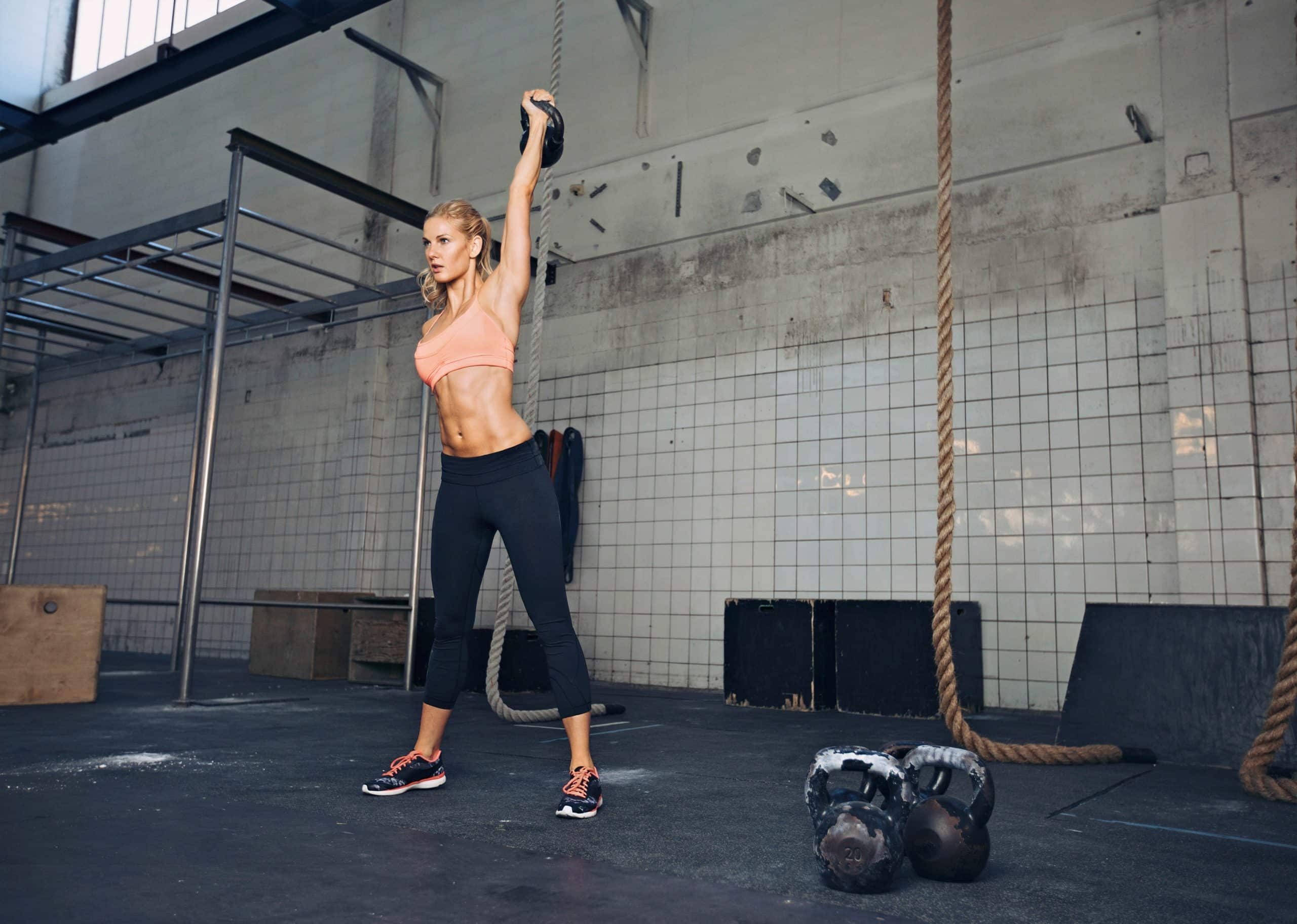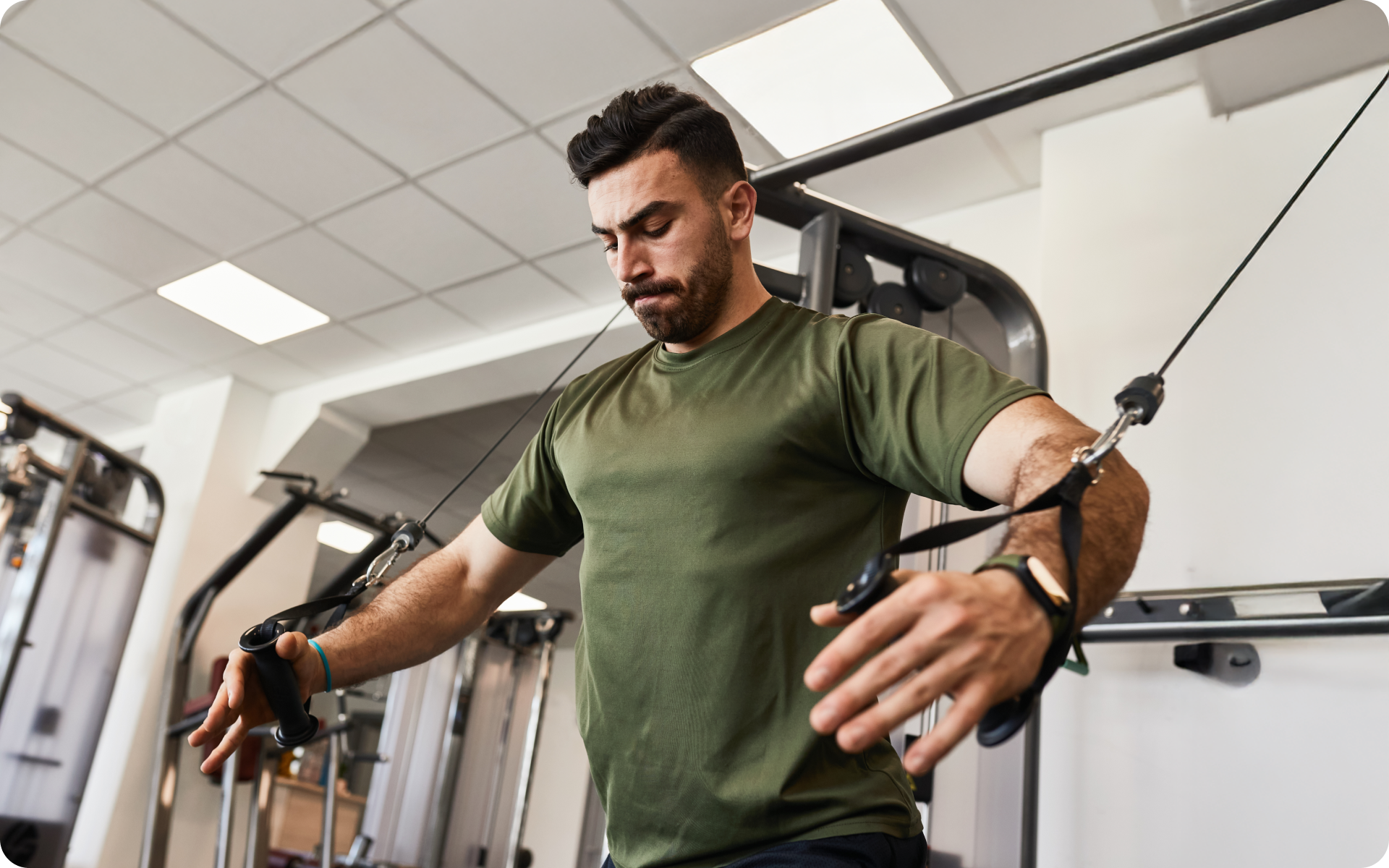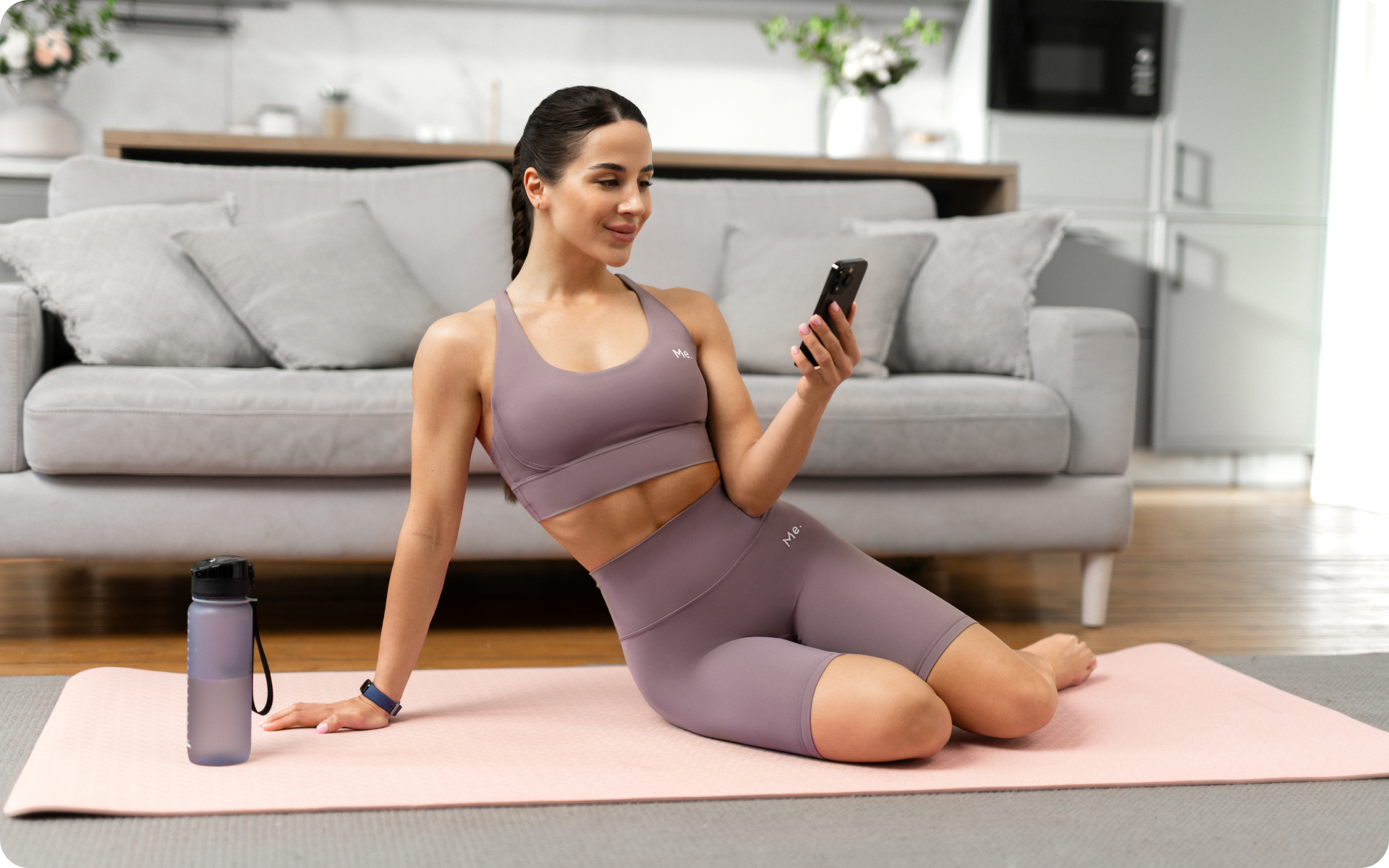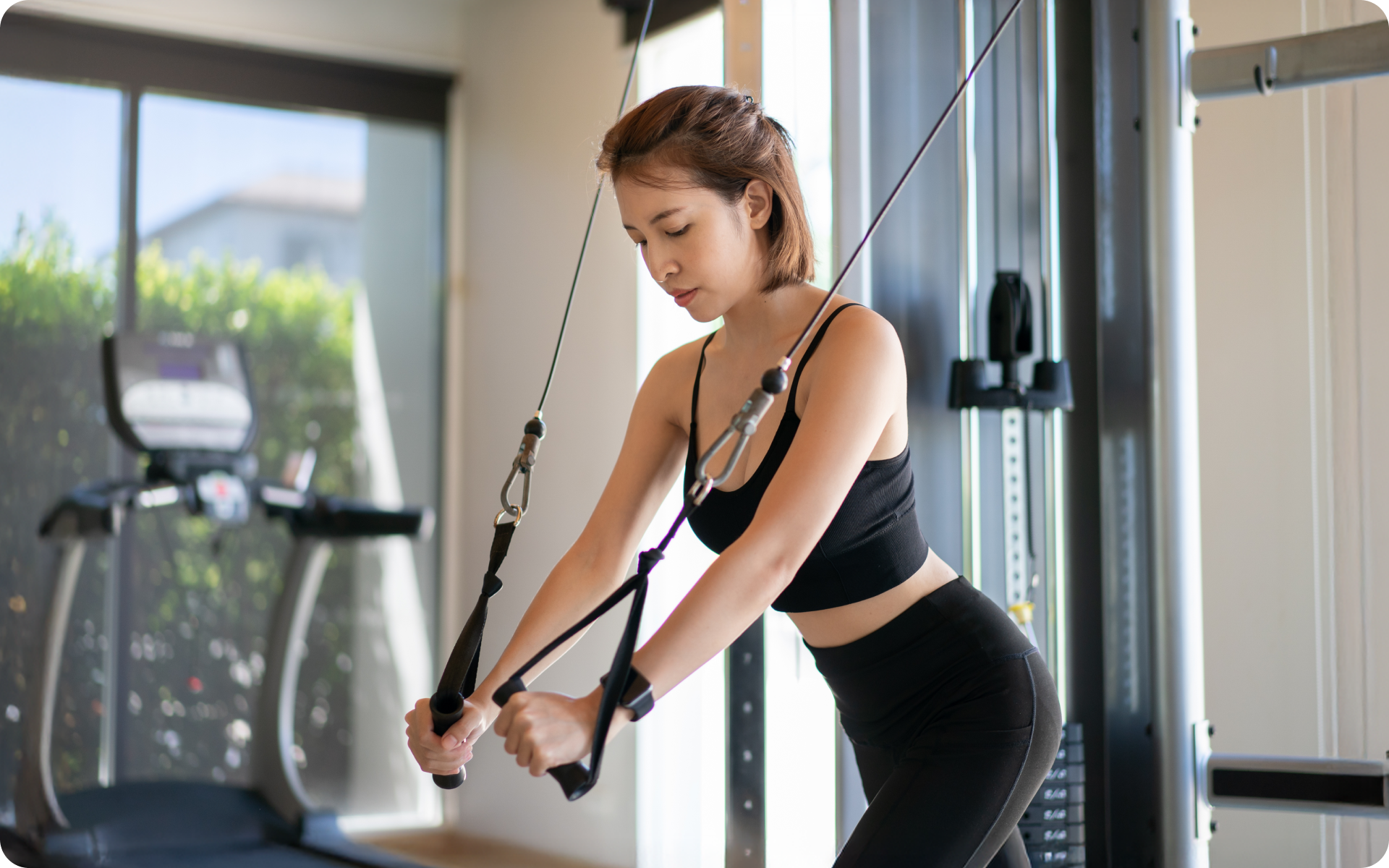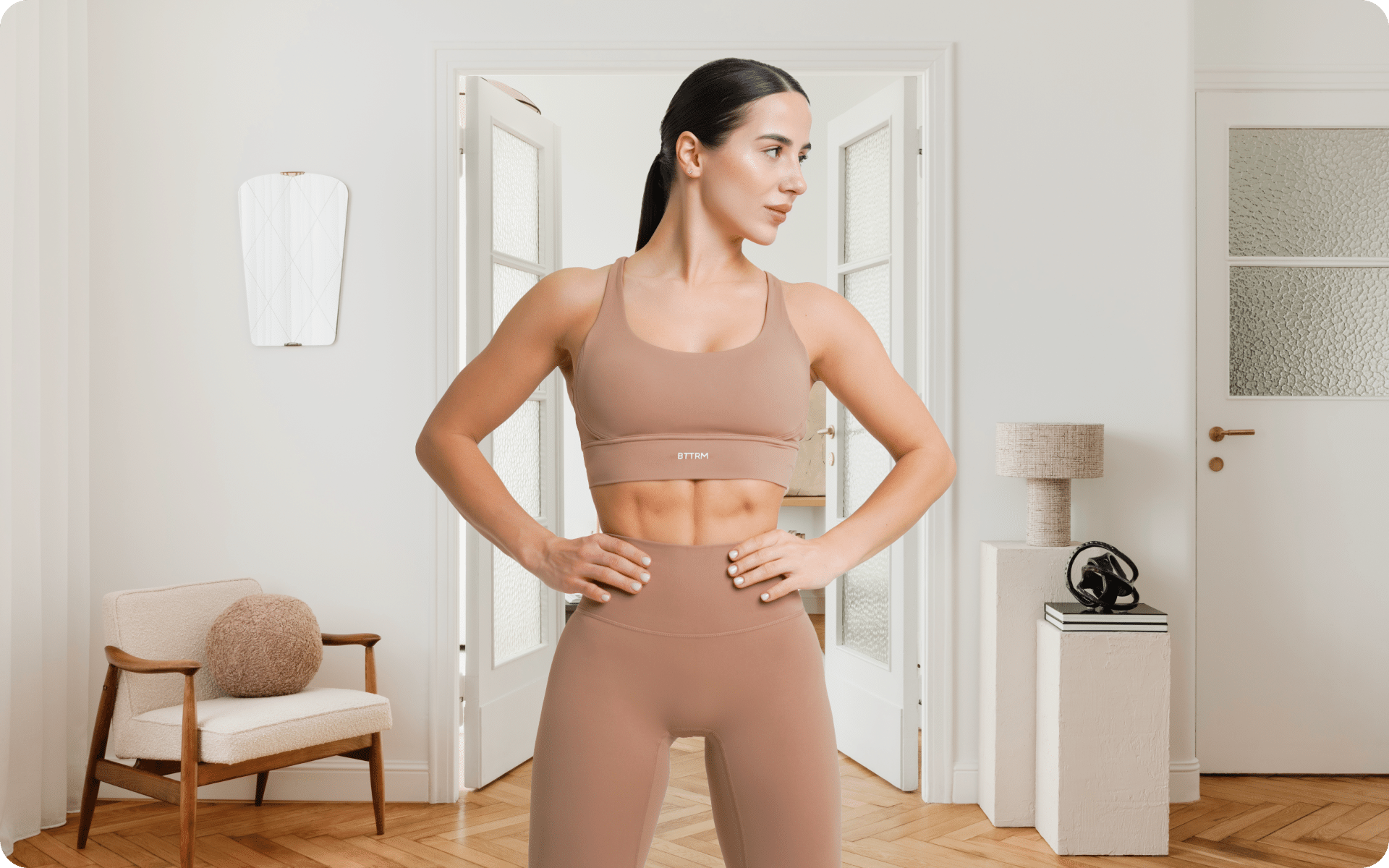Snatching, pulling, catching, and muscle-building is desirable to you, if you’re here. Swift motions, forceful movements, and perfect extensions are what you want. You’d love to know what these movements do for you. Dumbbell snatch muscles explains everything.
Beginners and advanced athletes, bodybuilders, muscle enthusiasts, and CrossFit gurus enjoy knowing the muscles worked during reps. Dumbbell snatches work various muscles as a simple yet effective weightlifting exercise you can do at home.
What Muscles Does the Dumbbell Snatch Work?
Fortunately, dumbbell snatches are an excellent CrossFit activity that welcomes various benefits as a compound workout. The University of Chichester explains how dumbbell snatches are unilateral movements that work multiple muscles (4).
The dumbbell snatch is a full-body, compound workout strength trainers enjoy. WebMD calls dumbbell snatches an explosive force of strength training (11). Let’s discover why trainers, CrossFit enthusiasts, and bodybuilders alike enjoy this workout.
Single-Hand Dumbbell Snatch Muscles Worked
The University of Murcia found that dumbbell snatch exercises can improve the upper body’s flexor muscle groups, including the hand (4). Florida Atlantic University lists the muscles in your hands when working on the upper body flexor muscle groups (2):
- Flex carpal radialis,
- Flexor carpal ulnaris,
- Flexor pollicis longus,
- Flexor digitorum profundus,
- Flexor digitorum superficialus,
- Palmarus longus.
Florida Atlantic University also explains why these muscles matter for muscle-building and strengthening (2). The flexor muscles in your hand play a vital role in flexion, which includes grip strength. You won’t be able to do snatches if you can’t grip dumbbells or kettlebells tightly.
The muscle-building potential of single-hand dumbbell snatches can open the doors to more elaborate snatch movements to build muscles elsewhere in your body.
BetterMe app will provide you with a host of fat-frying fitness routines that’ll scare the extra pounds away and turn your body into a masterpiece! Get your life moving in the right direction with BetterMe!
One-Arm Dumbbell Snatch Muscles Worked
Dr. Dany Baby confirms that one-arm dumbbell snatches work various muscles in your body (11). It’s a full-body muscle workout you don’t expect, and you’ll build strength in multiple places. Dr. Baby breaks down the muscles worked as follows (11):
- Deltoids are the muscle group in your shoulders,
- Glutes are the three muscles comprised in your buttocks
- Trapezius is the muscles worked in your back, the base of your skull, shoulder blades, neck, and arms,
- Quadriceps are the major muscles supporting your thighs, knees, and hips.
Upstate Medical University confirms core muscles stabilize your body to support and protect the spine (5). Noble Clay Fitness also explains how your core muscles work hard to stabilize your body during dumbbell snatch exercises (13). Let’s not forget the incredible abs you’ll get.
Dumbbell Power Snatch Muscles Worked
The power snatch is a gentle movement to prevent injuries during the lift if you might have trouble doing it. Dr. Dany Baby explains how the power snatch still works muscles in your shoulder and back while being an easier option on your knees (11).
Dumbbell Two-Arm Snatch Muscles for Advanced Muscle-Building
The University of Murcia reviewed various studies about weightlifting, overhead press, and snatch exercises (16). The review specifically looked at snatch and squat combinations. Traditional Weightlifting included the press in competition, but modern weightlifting has since removed the press to count as a successful lift. Today, competitions include both the clean and jerk and the snatch
The two-arm dumbbell snatch movements increased stability, coordination, strength, and balance. Dumbbell snatches combined with squatting motions worked the flexor (anterior) and extensor (posterior) muscle groups in the upper and lower body (16).
Upper Body Muscles Worked by Two-Arm Dumbbell Snatches
Serious fitness gurus and enthusiasts enjoy knowing which muscles they work and how it benefits them. University Health Shreveport lists seven essential muscles that are part of the extensor group (1):
- Brachioradialis,
- Extensor capri radialis brevis,
- Extensor carpi radialis longus,
- Extensor carpi ulnaris,
- Extensor digitorum,
- Extensor digiti minimi,
- Anconeus.
These muscles primarily control movements in your wrists, forearms and elbows (1). Furthermore, Integrated Rehabilitation Services places these muscle groups as upper body anterior and posterior muscles (3):
- Biceps,
- Deltoids,
- Pectoralis,
- Triceps,
- Rotator cuffs,
Building and strengthening muscles in the upper body, chest, shoulders, and arms bring benefits. Integrated Rehabilitation Services confirms how metabolism, posture, heart health, and bodybuilding goals can improve as a result (3). Upper body muscle-building may also help reduce injury risks.
Read more: Fire Up Your Muscles With Effective Resistance Bands Leg Workout
Lower Body Muscled Worked With Two-Arm Dumbbell Snatches
The University of Murcia also confirmed how dumbbell snatches can help build lower body posterior and anterior muscles (16). So, which muscles will you strengthen, build, and master in your lower body with two-arm dumbbell snatches?
The Cleveland Clinic describes posterior and anterior leg muscles working together for running, walking, and aerobic movements (12). Anterior muscles include the fibularis tertius, the tibialis anterior, and your quadriceps.
Posterior leg muscles include your hamstrings (biceps femoris, semimembranosus, and semitendinosus) and lower leg muscles including the gastrocnemius and soleus. Lower body muscle groups affected also include those in your hips. Physiopedia shows the main hip muscles as your psoas major, gluteus maximus, rectus femoris, and gluteus medius (9).
The University of Murcia’s review states that dumbbell snatches may help build muscle in your lower body effectively (16).
Understand Barbell vs. Dumbbell Snatches for the Potential
The University of Chichester’s School of Sport, Exercise, and Health Sciences studied how different barbell and dumbbell snatches work (4). Barbell snatches are bilateral movements, while dumbbell snatches are unilateral movements. The differences included:
- Dumbbell snatches had greater ground reaction forces in the non-lifting side, compared to the side of the body lifting the db.
- The greater force on muscles showed on the non-lifting side, where participants didn’t lift or swing dumbbells overhead.
- Researchers concluded that dumbbell snatches offer asymmetry that may allow specific athletes to target weaker muscles on one side of the body.
The unilateral benefits of dumbbell snatches mean you can target specific muscles on your body’s side that aren’t as strong as the other side (4). However, you can also alternate between hands to ensure you get both sides equally if that’s what you desire.
Dumbbell Snatch Mistakes to Avoid
Dr. Dany Baby mentions a few mistakes that may lead to injuries or overextending the muscles with dumbbell snatches (11). Please take caution as a beginner and follow Dr. Baby’s advice closely:
- Use the correct weight dumbbells,
- Never use advanced variations as a beginner,
- Practice the proper grip, stance, and posture,
- Don’t extend your body earlier than recommended in workouts,
- Be sure to open the hips and knees simultaneously.
Registered Dietician Katey Davidson also recommends safety measures for beginners because dumbbell snatches are a technical exercise (6). Practice the correct form with water bottles or ultra-light weights before exercising at home.
Dumbbell Weight Guidelines for Muscle Building
The weightlifting tool at Strength Level shows the standard weights for dumbbells for men and women of different levels (7):
- Beginner Men can typically start with 24-pound dumbbells and gradually move up to 115-pound dumbbells as they become advanced.
- Beginner Women can typically start with 13-pound dumbbells and progressively move to 67-pound dumbbells as they become advanced athletes.
Betterme will keep you laser-focused on your weight loss journey! Nutrient-packed meal plans, fat-blasting workouts, galvanizing challenges and much more. Try using the app and see for yourself!
Safe Ways to Work Different Dumbbell Snatch Target Muscles
Dumbbell snatches are fast, forceful, and unilaterally precise if you do them right. Here are some safe ways to work target muscles with dumbbell snatches and variations.
One-Arm Dumbbell Snatch for Core, Back, and Shoulder Muscles
The National Strength and Conditioning Association recommends doing one-arm dumbbell snatches safely by following careful instructions (14). The association splits the movement into four sections: starting point, pull, catch, and downward.
Starting Point
- Place the dumbbell vertically on the floor in front of you before spreading your ankles shoulder-width apart and pointing your toes outward.
- Squat downward with your hips lower than your shoulders, and grip your dumbbell with a closed fist and fully extended elbow.
- Hang your dumbbell-free arm next to your body.
- Remember to memorize the position because it will be your starting point between reps.
The Pull
- Initiate the movement by forcefully extending your knees, hips, and ankles (referred to as triple extension).
- The dumbbell remains close to your body as it rises speedily.
- Keep your dumbbell arm extended while your knees, hips, and ankles expand to a straight position.
- Rapidly shrug the dumbbell arm with a straight elbow as your hips, ankles, and knees straighten. Your elbow should be pointing outward while it rises.
- Quickly flex your elbow and pull your body under the dumbbell as your shoulder reaches its maximum height. The dumbbell will come close to your torso.
- Keep pulling as high and long as possible with the dumbbell arm.
The Catch
- Pull your body under the dumbbell as your lower body straightens, and your dumbbell reaches its prime height by rotating your arm.
- Extend your elbow to push the dumbbell higher while you force your body downward to go under the dumbbell completely.
- You’ll quickly come down to reach a quarter-squat position.
- Your elbow should be entirely straight as you catch in the quarter-squat position.
- The non-dumbbell arm should be by your side or hip.
- Compose your balance and coordination before standing up straight.
The Downward Movement
- Once you complete the rep, slowly release tension in your shoulders and arm to bring the dumbbell down.
- Control the dumbbell descent through the shoulder height, down your thighs, and onto the floor between your feet. Use a squatting position to return to the starting point.
- Repeat the steps from the starting point for another rep.
Slight Dumbbell Snatch Variations for Other Muscles
Let’s discover which variations work for different muscle groups to ensure you build muscle everywhere you wish to target with dumbbell snatches. The pull and catch are similar to the one-arm snatch unless stated otherwise.
Half Dumbbell Snatch for Upper Body Muscles for Beginners
Performance expert Dr. John Rusin explains how to do a half kettlebell snatch, which you can adapt to a half dumbbell snatch (15). It’s excellent for beginners to work upper body muscles while learning proper form and motion during dumbbell snatches.
- Don’t worry about squatting at a starting point or with the catch.
- Instead, start your position with your shoulders over the dumbbell, then explode your hips to elevate the db up overhead. Keep the dumbbell close to your body during the pull and ensure a complete lockout with your shoulder at the top.
- Your legs will finish tall in the receiving position rather than in a semi-squat.
- Lower the DB to your shoulder, then control it back to the start position. Continue the dumbbell snatch for reps five times on each side.
Half-Kneeling Dumbbell Snatch for Back and Shoulder Muscles
Strongman Dr. John Rusin recommends a half-kneeling snatch to add some momentum from the lower body to continue developing the correct movement. (15) Follow these simple variation instructions:
- Kneel on one knee with your other foot flat on the ground.
- Place the dumbbell between your legs before gripping it tightly.
- Stretch your non-dumbbell arm straight to your knee, not touching the ground.
- Pull the dumbbell toward your shoulder, keeping your elbow straight as it goes overhead.
- Allow the non-dumbbell arm to move sideways over your hip as you catch the dumbbell overhead.
- Bring it back down with the same motions as you bring your non-dumbbell hand back to rest on your knee.
- Continue the reps five times on each side.
The Hang Dumbbell Snatch for Lower Body Muscles
Dr. Dany Baby recommends the hang snatch if old injuries prevent you from lifting the dumbbell from the floor (11). Meanwhile, you’ll have an excellent lower body workout that helps build muscle in your glutes, hamstrings, trapezius, and thighs. Follow these slight changes:
- Only bend your knees slightly during the starting point to form a barely noticeable squat position.
- Keep the dumbbell closer to your torso and body as you pull and catch, and don’t focus too much on keeping your elbows straight.
- catch the dumbbell overhead while landing back in your start position.
The Power Dumbbell Snatch for Upper Body Muscles
The power snatch is a safer movement that still builds muscle in the upper back. Dr. Dany Baby recommends altering the snatch by using a short dip position to initiate the lift. (11). Meanwhile, the power dumbbell snatch is also suitable for advanced trainers using heavier weights.
- Don’t begin with the dumbbell flat on the floor but instead hanging between your legs.
- To set your start position, hinge your hips back, with a slight bend in your knee.
- Initiate by driving your feet into the ground, to a slight jump as you raise your elbow high with the momentum.
- Make sure the dumbbell stays closer to your torso without trying to keep your elbows straight.
- Pull yourself under the db and catch fast ensuring a strong lockout and proper technique.
Half Rotational Dumbbell Snatch for Core, Upper, and Lower Body Muscles
Dr. John Rusin recommends a half-rotational dumbbell snatch for intermediate or advanced trainers as a full-body muscle-building exercise (15). With this variation, you can build a stronger connection between your core, shoulders, back, hips, legs, and glutes muscles. Follow these slight changes:
- Don’t start with a squat. Instead, stand with your legs in the starting position with your knees slightly bent to gain momentum.
- Bring the dumbbell to your opposite hip before pulling it back while rotating your shoulder.
- The dumbbell will swing past your torso and over the weighted hand’s shoulder until it catches overhead.
- Use the same smooth movement and momentum to continue with five more reps on each side.
- Avoid squatting during the variation, as the momentum will throw you off with too much force.
- Finally, ensure you’re not rotating your shoulder enough to hurt yourself during the pull and catch.
Read more: Micro Tears In Muscles After Workout: Why Your Body Aches and What To Do About It
FAQs
What Does Lifting Dumbbells Do?
WebMD is specific about the benefits of lifting dumbbells (8). Lifting weights and dumbbells are excellent strength training routines. Using the appropriately weighted dumbbells in precise movements can target major muscle groups in your body while also eliciting cardio benefits.
Can You Build Muscle With Just Dumbbells?
The New York Times lists dumbbells as one of the weights you can use to build muscles in regular nine-minute workouts (10). Strength training with weights is an effective method for building muscles. Dumbbells are a useful choice to add resistance in unilateral exercises to target weak muscles.
Are Dumbbells Good for Building Muscle?
WebMD lists muscle-building and strength training as one of the dumbbells’ best benefits as a workout routine (8). Strength training can develop specific muscle groups throughout your body. Developing well-rounded total body strength can also help reduce the risk of certain injuries.
What Muscles Are Worked Performing Dumbbell Snatch?
You can strengthen, build, and train your quads, glutes, deltoids, and trapezius muscles. Muscle-building also boosts your metabolism and supports joints to prevent injuries. Dr. Dany Baby talks about how dumbbell snatches build strength all over your body (11).
The Bottom Line
Dumbbell snatch exercises build muscle in your core, upper body, lower body, legs, and neck. Where you build muscles can depend on which variations you choose because the unilateral workout allows you to strengthen specific muscles in your body with variations.
DISCLAIMER:
This article is intended for general informational purposes only and does not serve to address individual circumstances. It is not a substitute for professional advice or help and should not be relied on for making any kind of decision-making. Any action taken as a direct or indirect result of the information in this article is entirely at your own risk and is your sole responsibility.
BetterMe, its content staff, and its medical advisors accept no responsibility for inaccuracies, errors, misstatements, inconsistencies, or omissions and specifically disclaim any liability, loss or risk, personal, professional or otherwise, which may be incurred as a consequence, directly or indirectly, of the use and/or application of any content.
You should always seek the advice of your physician or other qualified health provider with any questions you may have regarding a medical condition or your specific situation. Never disregard professional medical advice or delay seeking it because of BetterMe content. If you suspect or think you may have a medical emergency, call your doctor.
SOURCES:
- Anatomy, Shoulder and Upper Limb, Forearm Muscles – StatPearls – NCBI Bookshelf (2022, nih.gov)
- Anatomy, Shoulder and Upper Limb, Hand Long Flexor Tendons and Sheaths – StatPearls – NCBI Bookshelf (2022, nih.gov)
- Benefits of Increasing Upper Body Strength | Integrated Rehabilitation Services (2021, integrehab.com)
- Biomechanical comparison of unilateral and bilateral power snatch lifts – PubMed (2008, nih.gov)
- Core Strength and Balance (n.d., upstate.edu)
- Dumbbell Snatch: How to Do It Safely, Plus Benefits (2021, healthline.com)
- Dumbbell Snatch Standards for Men and Women (lb) – Strength Level (2022, strengthlevel.com)
- Dumbbells: What You Need to Know About Your Workout (2021, webmd.com)
- Hip Anatomy – Physiopedia (n.d., physio-pedia.com)
- How to Build Muscle in 9 Minutes – Well Guides – The New York Times (n.d., nytimes.com)
- How to Do a Snatch (2022, webmd.com)
- Leg Muscles: Anatomy and Function (2021, clevelandclinic.org)
- MOVEMENT TIP: The Dumbbell Snatch | Noble Clay Fitness (n.d., nobleclayfitness.com)
- One-Arm Dumbbell Snatch (2017, nsca.com)
- Top 22 Kettlebell Snatch Variations For Power & Performance (n.d., drjohnrusin.com)
- Weightlifting Overhead Pressing Derivatives: A Review of the Literature – PMC (2019, nih.gov)
